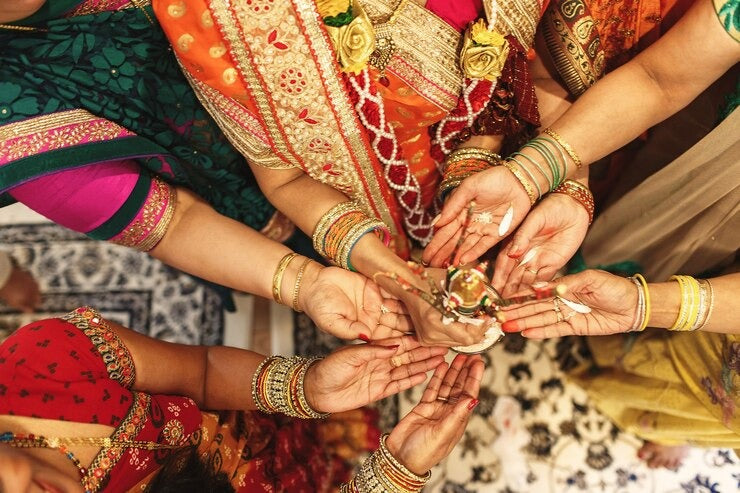The alluring saree drape embodies the diverse cultural legacies of India's states and regions. At Weavers Shop, we want to highlight the fascinating regional diversity in weaving styles that distinguish Indian sarees from other types of clothing through our sarees. In this blog, let’ take a tour of India's several states, examining the unique weaving customs of trending saree collection that each one has to offer.
Traditionally Woven Sarees from Different Regions
● The North India
The light and airy sarees made from fine wool, cotton, and silk are well-known in the northern Indian states of Jammu & Kashmir and Punjab. You can easily buy saree online with North Indian style. Vegetable dyes, intricate embroidery, and threadwork are characteristics of sarees from this area, such as Jamdani, Phulkari, and Pashmina. Cotton yarn and silk threads are used by the renowned Madhya Pradeshi weavers of Chanderi and Maheshwari to produce lightweight sarees with zari embroidery.
● East India
India's eastern region has a long history of using traditional saree weaving techniques. West Bengal is known for producing the exquisite silk Baluchari sarees, which include scenes from the Ramayana and Mahabharata. Bright hues and conventional designs characterise Odisha's Bomkai sarees. The light, airy, and absorbent Muga, Pat, and Eri silk sarees are well-known from Assam.
● Western India
Gujarat has a long history of producing vibrant Bandhani sarees by employing the tie and dye technique on materials like silk, cotton, and chiffon. The Tandavalam sarees, renowned for its striped and checked silk thread weaving, are a major draw for Surat for Indian saree wedding. Maharashtra's Paithani sarees are highly adorned traditional sarees made from silk with elaborate zari work.
● Southern India
Tamil Nadu's Kanchipuram sarees are distinguished by their vivid, clashing hues and zari weaving on luxurious silk. Chettinad sarees include striking stripes and checks that are reminiscent of Raja Ravi Varma's paintings. Kerala is known for its gorgeous yet simple zari borders adorning off-white and gold Kasavu sarees. Using hand block prints, Andhra Pradesh creates lightweight cotton sarees such as Mangalagiri, Venkatagiri, and Gadwal. When looking for south style saree, you should discover the latest saree collection online.
● Central India
The famous Chanderi sarees, made in the Madhya Pradesh village of Chanderi, are renowned for their elaborate zari embroidery, light weight fabric, and shimmering sheen. Chattisgarh's Bastar is well-known for its tribal sarees, which are fashioned by indigenous weavers using cotton yarn dyed black or maroon and decorated with Gond tribal art designs.
● Northeastern India
Golden hues and motifs inspired by the native flora and fauna are characteristic of Assamese silk sarees, such as Eri, Muga, and Pat. Sikkim creates Lepcha sarees in vibrant colours, appliqué, and embroidery that showcase Tibetan and Nepali influences. Manipur's Maibi sarees include geometric motifs in red, green, and yellow that represent Lai patterns, which are symbolic of nature.
Preserving the Tradition
At Weavers Shop, being the best online saree seller, we collaborate closely with weavers from various areas to maintain and encourage the history of India's regional weaving customs. Our selection of sarees modernises traditional art forms, textiles, and designs to appeal to contemporary tastes. The extraordinary range of regional weaving techniques found in India is a reflection of the richness of our cultural legacy, which we are pleased to commemorate and impart to the world.
Conclusion
We really hope you enjoyed this quick look at the vibrant regional diversity that distinguishes Indian sarees! Please support the nation's indigenous crafts by browsing our latest saree collection, which features a wide variety of traditional weaves.

